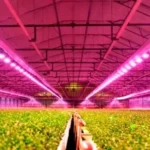Green home improvement projects not only make your house more efficient and comfortable, but they also help you limit your ecological footprint. Additionally, green projects lead to cost savings in the long run, such as lowered energy bills, by reducing dependence on conventional energy sources.
Beyond that, eco-friendly home improvement projects can help you economically solve household problems. For instance, creating a rain garden with deep-rooted, water-loving plants can prevent water damage to an extent by absorbing excess water from downspouts and runoff.
Such measures can particularly benefit homeowners in locations like Atlanta, which, according to the U.S. climate data, receives significant rainfall. The abundance of rain increases the likelihood of water-related issues, including water damage.
Besides developing a rain garden, other sustainable ideas to incorporate into your house are listed below.
- Insulate Pipes with Eco-Friendly Materials
Insulating your exposed pipes with eco-friendly materials is a sustainable home improvement project that can prevent the pipes from bursting in winter. When the outside temperature drops significantly, the water can freeze, increasing the pressure within the pipes.
When cold water passes through uninsulated pipes, the surrounding warm air can cause condensation. The moist air can drive water damage, mold growth, and potential structural issues. Insulation on the pipe acts as a barrier and suppresses condensation.
The bursting of pipes can damage the house through flooded basements, damaged walls, and ruined belongings. In places like Atlanta, which already gets heavy rain (about 50 inches every year) and with more than 14% of flood-prone properties, the possibility of water damage cannot be ignored. Therefore, residents must stay in touch with reliable Atlanta water damage restoration companies for water extraction.
You can use the following eco-friendly materials for insulating the pipes in your house:
- Recycled cotton insulation is made with post-consumer denim and other textile waste by shredding old jeans, t-shirts, and other cotton-based materials. This insulation material doesn’t contain any harmful chemicals, making it safe for installers and residents.
- Cellulose insulation is made with recycled paper and cardboard after treating them with non-toxic fire retardants, making it safe for pipe insulation.
Using eco-friendly materials for insulating your pipes protects them from extreme weather conditions and your house from potential flooding. It also prevents waste from going to dumping grounds.
- Create a Green Roof or Roof Garden
Another sustainable home improvement project is to create a green roof or roof garden. A green roof is an excellent way to retain and absorb rainwater through vegetation.
Some fascinating benefits of incorporating green roofs in your house are listed below.
- It reduces the burden on municipal drainage systems by preventing stormwater runoff.
- By absorbing a significant amount of water during the rainy season, green roofs prevent urban flooding, a major issue in closely populated areas.
- Green roofs are efficient air purifiers. By removing toxins from the air, they improve the air quality and living environment for the residents.
- In cities where green spaces are a premium, roof gardens offer a habitat for wildlife, such as birds, butterflies, and insects. Hence, they support biodiversity and balance nature and human activities.
- Natural vegetation adds a layer of insulation to houses, minimizing the heating and cooling needs of the homes, eventually slashing energy bills.
- From an economic perspective, adding a green roof increases the worth of the property, attracting more potential buyers and renters.
- A roof garden also increases the useful life of the roof by shielding it from harsh weather elements.
In sum, by creating room gardens in cities, you can contribute to making the environment purer, greener, and more resilient.
- Install Energy-Efficient Windows
Installation of energy-efficient windows is becoming a sought-after project these days, considering the skyrocketing cost of energy.
Below is a list of benefits you can get from installing energy-efficient windows:
- The presence of advanced features such as gas fillings or air filling between window panes and silver coating makes them more energy-efficient than ordinary windows.
- They maintain a stable indoor temperature by preventing heat transfer, minimizing your reliance on artificial heating and cooling systems.
- Energy-efficient windows with low-emissivity (low-E) coatings keep a significant amount of harmful U.V. rays away from your house. Installing them can protect your furniture, flooring, and other interior elements from fading by U.V. exposure.
- Windows with sound-muffling properties block the outside noise from infiltrating your house. They are especially beneficial for homes located in busy urban settings.
- Installing energy-efficient windows makes the house more valuable as potential buyers appreciate energy-efficient features.
The one-time cost of replacing old windows with energy-efficient ones may seem daunting, but considering them an investment for the future makes the cost bearable.
- Use Reclaimed Wood
Using reclaimed wood in your home improvement project is an interesting way to make it sustainable and eco-friendly. Reclaimed timber salvaged from old buildings, warehouses, and barns is more economical than new lumber. Using old wood reduces the demand for new lumber, decreasing the strain on natural resources.
Here are some creative ways to incorporate reclaimed wood into your home.
- Create stunning accent walls and ceilings with reclaimed wood. The weathered patina and aged texture of used wood bestow timelessness to your house. The resultant appeal can complement traditional as well as modern décor.
- You can create unique and one-of-a-kind furniture pieces with reclaimed wood, such as bookshelves, sideboards, etc. Since there is a history associated with each piece of reclaimed wood, your furniture can easily become a conversation starter.
- Repurpose reclaimed wood to make flooring for an ageless and elegant look in the house. Its distinctive shades and grain can create a visually captivating floor.
- You can also build doors, kitchen islands, cabinets, shelves, and bathroom vanities with wood retrieved from old buildings.
- Another artistic way to integrate reclaimed wood into your house is by making picture frames out of them to add elegance to your wall décor.
- Install a Cool Roof
More than 80% of the roofs in the U.S. have a dark, non-reflective surface that absorbs a significant amount of heat. Cool roofs, on the other hand, reflect most of the sunlight and absorb less heat. In cities, where an abundance of dark, heat-absorbing surfaces raise the temperature, cool roofs help reduce the “urban heat island effect.”
Cool roofs reduce the heat transfer in and out of buildings, reducing indoor temperatures and increasing comfort. The attic and upper portions remain more pleasant even in scorching summers.
Cool roofs are available in many colors, materials, and styles. Some of the commonly used materials are asphalt, metal, and tile. These options allow you to choose the type that enhances aesthetic value along with comfort.
Conclusion
Also Read P: 5 Tips for an Effective Website on a Budget
Also Read N: Is Rosarito Safe: Safety Tips To Travel In Rosarito
When renovating your house to make it more sustainable, the options are endless. We hope that the aforementioned eco-friendly home improvement project ideas were worth your while. By implementing these ideas, you can make your home more eco-friendly and create a more inviting living space. The added comfort will positively impact both your lifestyle and the environment. So, commit to a greener future and take the first step toward sustainable living today.






